Ireland’s alcohol consumption down 19% since 2001

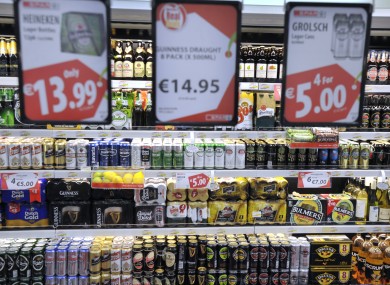
Alcohol consumption in Ireland is down 19 per cent since 2001, new figures show. Analysis of figures from the Revenue Commissioners and the CSO show that Irish people are drinking 2.7 litres of alcohol less than they did 11 years ago.
Published by drinks industry body the Drinks Industry Group of Ireland (Digi), the figures show that the average Irish person drank 14.44 litres of alcohol in 2001. Consumption levels have continued to fall over the last decade and currently stand at 11.68 litres.
“Between 2007 and 2012, average per adult consumption declined by 12.5 per cent,” said author of the study and DCU business school lecturer Tony Foley.
Average per adult alcohol consumption declined again in 2012 compared to 2011. People drank 0.5 per cent less last year than the year before, or a drop from 11.74 litres per adult to 11.68 litres per adult, he said.
The figures were calculated from CSO Population and Migration Estimates for April 2012 and the Revenue Commissioners’ 2012 alcohol clearances data. The study methodology defines an adult as “15 years and older”.
Digi chairman and Diageo’s corporate relations director for Europe, Peter O’Brien, said the drop was due to the weak economy and changing consumer habits.
“Weakness in the domestic economy and the continued pressure on discretionary income are clearly having a negative effect on the drinks sector,” he said. “In addition there has been a substantial societal shift…increasingly people are dining out, choosing to enjoy alcohol as an accompaniment to food.”
Programmes like the drinks industry-sponsored drinkaware.ie were also promoting the more responsible use of alcohol, he said.
The Government’s National Substance Misuse Strategy published last year recommends a ban on alcohol sponsorship of sport, an increase in excise duties and a minimum price per gramme of alcohol.
Ireland’s youth views its future in science and entrepreneurship

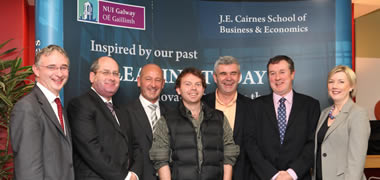
If you want to see how an economy is doing, you should look for key indicators. The most obvious are barometers like employment levels and consumer confidence. But yesterday’s statistics from the Central Applications Office offer another glimpse of where Ireland is heading economically and – more instructively – where it hopes to arrive in a few years.
The CAO figures – a snapshot of student preferences – provide us with a breakdown of third-level applications that were submitted by February 1.
And they tell an interesting story, with business, technology, science and agricultural courses in high demand from students who hope to enter third level this autumn.
Nationally, science has seen a further 4pc rise in applications when compared with 2012 and is up a staggering 70pc since 2008.
The remarkable swing back to business is particularly interesting too, as it is up 4pc.
It is the first sign of growth in this area since 2008, when the economy imploded.
Could we hope to believe that this marks a growing sense of entrepreneurship among school-leavers and, perhaps, their parents?
While CAO choices are primarily the responsibility of students themselves, most parents or guardians like to have an input. Perhaps it is their confidence – fragile though it may be – that is being reflected here?
It would appear that a corner has been turned in our economic recovery since Christmas and the next generation does not appear daunted by the challenges ahead.
That, in itself, is good news.
Heart attacks in middle aged women of Europe now rising


The number of middle-aged women having heart attacks is on the increase in Europe, experts have warned.
According to the European Cardiology Society (ECS), while there have been big improvements in the heart health of Europeans in recent years, many women still associate cardiovascular disease with men and do not consider themselves at risk.
However heart disease remains the biggest killer of women in every EU country, including Ireland.
Furthermore, while most heart attacks occur in women over the age of 70, recent European research showed an increase in risk among middle-aged women.
According to ECS spokesperson, Prof Angela Maas, many women ‘mistakenly believe that they are protected from heart disease by their oestrogen hormones’.
She noted that while most heart disease-related deaths are among smokers and factors such as genetics can play a role, there are other ways that women can increase their risk, such as by leading a sedentary lifestyle.
“Eighty percent of cardiovascular disease can be avoided. Women can prevent heart disease by maintaining a healthy lifestyle throughout their entire lives, by exercising regularly, eating a healthy diet, avoiding stress, maintaining a normal weight and not smoking,” Prof Maas explained.
Women are also advised to have their cholesterol, blood sugar and blood pressure checked on a regular basis, particularly after the menopause when the risk of heart disease rises significantly in females.
They should also be aware of the signs of a heart attack, which can include pain in the chest, neck or left arm or sudden breathlessness.
Prof Maas noted that even though heart disease is the biggest killer of women, ‘there is a great lack of knowledge among cardiologists on the insights in gender differences in cardiovascular disease that have been passed over for the last 20 years’.
“In the development of new medical therapies, female patients are still underrepresented. As cardiology has reached many technical developments, we need to focus more on female patients,” she added.
The ECS made its comments to coincide with International Women’s Day (March 8).
Leo Varadkar announces Irish road repair’s programme

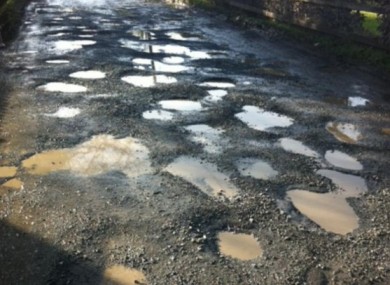
Minister for Transport Leo Varadkar yesterday announced a series of measures to tackle the “growing problem” of road maintenance and upkeep.
He has told local authorities they can use € 42 million in funds currently allocated to road improvements for emergency repairs to local and regional roads instead.
However, there would be no budget for new local or regional road construction in the next couple of years, he said.
“While this will be a disappointment to some areas, there is no point in building new roads if we cannot maintain the existing network,” he said.
A new fund of €2.7million will be allocated this year to drainage works in the worst-affected local and regional roads, Mr Varadkar said. Water “lying on roads” was a large cause of deterioration, he said.
There was a “real and growing problem” with local roads, particularly tertiary roads and regional roads in some rural counties, Mr Varadkar told RTÉ Radio.
Councillors had been urging his department to assist with funds for road conditions, he said. However, he called on local authorities to spend more of the funding they receive from road tax on maintenance.
“Each local authority is expected to use a portion of its own resources on road improvements, in addition to direct Government funding,”
Protesters picket outside the Revenue Centre over property tax
Dozens of protesters are picketing the Revenue Computer Centre in Dublin this afternoon as part of the campaign against the property tax.
The centre will process the 1.9 million forms which will be sent to householders from Monday.
The Campaign Against Household and Water Taxes also says it plans to hold a national demonstration in Dublin next month.
Meanwhile:-
Property tax letters to go out says Eamon Gilmore
The Revenue Commissioners will begin an information campaign next week as letters go out to some 1.6 million householders about the property tax to be introduced from July.
The letters will include an estimated value for the property and Tánaiste Eamon Gilmore said the Revenue campaign would inform householders about the steps involved in making a declaration.
It would also deal with how householders can deal with letters sent in error or in duplicate “because up to now or recently there hasn’t been a full data base of properties that are owned in the State”.
He said there would be a period of time where householders could contact the Revenue if they believed the estimate was wrong and make a declaration about the value of their property.
Mr Gilmore was responding to Sinn Féin deputy leader Mary Lou McDonald who had asked him to confirm that if householders did not comply with the property tax, it would be taken from bank accounts, social welfare payments, salaries or credit union accounts. “How on earth can you justify a situation where the Government through the Revenue Commissioners, will put their hands into the pockets of people who are struggling, will deduct this tax from a social welfare payment, a job seekers allowance or an old age pension?” she asked.
She said the tax “championed and proposed by Fianna Fáil” and now being implemented by Labour and Fine Gael, was a draconian piece of legislation which “takes no account of people’s ability to pay and will drive people into debt and some into poverty”.
Mr Gilmore said he was sure Sinn Féin, like every other party, would encourage people to be tax compliant. He said “the powers available to the Revenue Commissioners where a tax is not paid are well known and the question is whether you support those or not”.
Ms McDonald hit out at the “sniggers” from the Government benches as “smart alec rhetoric” and said the issue was not about being tax compliant. “There are a vast number of people who simply cannot afford this tax,” she said.
The Dublin Central TD told the Tánaiste: “Don’t try and lay this on the Revenue Commissioners. The legislation rushed through this House by Labour and Fine Gael will allow this family tax to be taken from social welfare payments, from peoples wages, from their bank accounts and from peoples credit union accounts.”
Mr Gilmore said this tax was a much smaller tax than the property tax Sinn Féin had “no difficulty with,” north of the Border and he said Sinn Féin’s “hypocrisy has no boundaries”.
He said it seemed to be fine for Ms McDonald to “lash any political charge”. However, t when one replies in kind “there seems to be a problem with that,” he added.
He reiterated the Revenue’s campaign to issue letters with a property value estimate and there would be a period of time where householders could engage with the Revenue if they disagreed with the estimate. He asked if Sinn Féin was supporting the campaign against the tax or if the party would encourage people to be tax compliant.
Stonehenge was World’s first product of ‘team building exercise’
STONEHENGE MAY HAVE BEEN THE RESULT OF THE WORLD’S FIRST TEAM-BUILDING EXERCISE WHICH UNIFIED THE PEOPLE OF ANCIENT BRITAIN, ACCORDING TO RESEARCHERS.
The vast stone structure has long been the subject of the debate among historians, who have variously described it as a pagan temple, or an astronomical calendar or observatory.
Now experts claim the monument was built as part of an annual winter solstice ritual which resembled “Glastonbury festival and a motorway building scheme at the same time”.
Researchers from University College London said as many as 4,000 people may have gathered at the site each year, at a time when the entire population numbered only tens of thousands.
Tests on remains found at the site reveal that people came to the site from as far as the Scottish Highlands at the same time every year to feast, and built the monument together.
But analysis of bones, tools and ancient houses in a primitive workers’ village near the site suggests it was only occupied for about a decade, and that Stonehenge was built in a matter of years.
The evidence also indicates that the homes lay unoccupied for most of the year, meaning the site was unlikely to have been a place of worship.
It was more likely the product of a unification ritual with people travelling across the country to build it around the solstices, particularly in winter, and then dispersing.
Prof Mike Parker Pearson, who led the study, explained: “What we have discovered is it’s in the building the thing that’s important. It’s not that they’re coming to worship, they’re coming to construct it.
“It is not so much a temple, it is a monument and it seems the big theme is unification … Stonehenge gets visited at certain points, people build and then go away.
“It’s something that’s Glastonbury festival and a motorway building scheme at the same time. It’s not all fun, there’s work too.”
Dating tests on historic artefacts revealed that Stonehenge was built about 4,500 years ago, during a brief window when all societies across Britain had begun to share a common culture.
A few hundred years later the arrival of the “Beaker People” in Britain, who brought new material goods including metals and the wheel, ended the pan-British culture and could explain why the monument was abandoned, Prof Parker Pearson said.



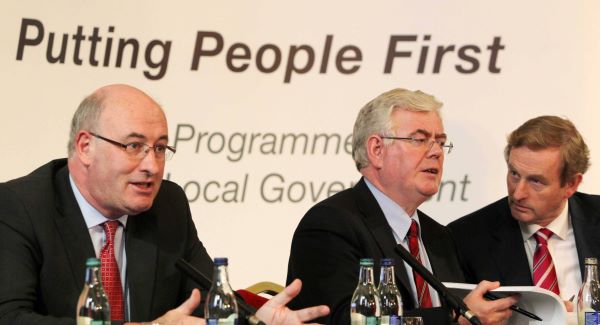
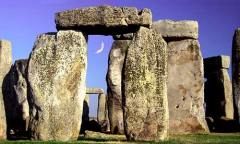

No comments:
Post a Comment